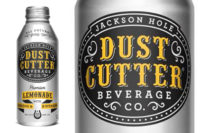Materials Technology: Retail Ready Packaging
Secondary packaging solution meets the needs of brand owners, retailers and consumers

Replenishing shelves is easier to do if the package is stackable.

Replenishing shelves is easier to do if the package is stackable.

82% of purchasing decisions are made at the point of sale, thus in-store packaging and its presentation are critical.



Secondary packaging is no longer confined to protecting products and preventing waste during transit. Brands and retailers are increasingly using innovative solutions – such as retail ready packaging to speed up the logistics of getting products onto shelves while also attracting consumers at the point of sale. According to a May 2014 report by PMMI, The Association for Packaging and Processing Technologies, the market for retail ready packaging is growing and will continue to do so. Retailers in search of more efficient packaging are continuously driving this growth.
Retail ready packaging helps consumers find products quickly
There are a number of characteristics that any retail ready packaging solution must meet. Perhaps most simply, it is necessary to remember that it is in the best interest of consumers and brand owners that packaging is made easy to identify. Additionally, information printed on the outside of a container not only helps consumers find products quickly, but also reduces the risk of placement errors in storage. This is especially important for goods arriving at stores in high volumes.
Packaging solutions that can streamline the process of in-store stocking also save retailers a lot of time. Innovative secondary packaging solutions should have clear opening instructions and involve one or two simple steps. Staff should be able to open containers without the use of extra tools such as knives or box-cutters – which can lead to injury. Well-designed perforation solutions can not only improve safety but also greatly reduce the chance of product damage.
Replenishing shelves is also typically simpler if the package is stackable, transportable and maintains its structure once open. Packaging that adheres to these conditions serves customers, brand owners and retailers alike by enhancing the consumer shopping experience, conveying a brand’s story and helping retailers stock efficiently. Finally, due to its recyclability, it supports sustainability efforts.
Connecting with consumers
As 82% of purchasing decisions are made at the point of sale, in-store packaging and its presentation is increasingly an important element in winning consumer preference. Innovative designs can set a product apart on shelves and have a considerable impact on consumer choice at point of purchase.
Developed to respond to the evolving needs of brand owners, consumers and retailers, Georgia-Pacific’s Brand Ready Packaging® (BRP) uses a forward-thinking design process, exacting production techniques and proprietary consumer insights to provide a packaging solution that helps communicate a brand’s story by maximizing the effectiveness of in-store secondary packaging. BRP employs a series of significant enhancements proven to drive consumer purchase intent, enhance the shopper’s experience and ultimately increase sales over industry-standard retail ready packaging options.
Solutions like BRP are designed to complement the primary package, in order to improve product identification and brand recognition. Consider how shoppers take products off the shelves throughout the course of the day. They typically remove the front products and leave others in the back. BRP can help brand owners prevent this loss of shelf-presence and ensure that a brand is visible on the shelf regardless of how many products have been removed. Higher exposure, of course, can significantly strengthen a brand and consequently improve sales. Bud’s Best Cookies, for example, had a 14% increase in sales with Georgia-Pacific’s BRP solutions.
The company was able to ensure that the new packaging met retailer needs while also building brand impact at the critical in-store moment of choice — ultimately enhancing the shopping experience. At the same time, retailers were able to save both time and money as the solution streamlined their in-store stocking, enabling products to go straight from the truck to the store shelves while requiring minimal resources for product unpacking, set-up and arranging.
What works best for one brand is not necessarily the best fit for another. Thus, it is important for brand owners to partner with the right supplier that can help implement packaging solutions that best fit their needs and goals.
Looking for a reprint of this article?
From high-res PDFs to custom plaques, order your copy today!









